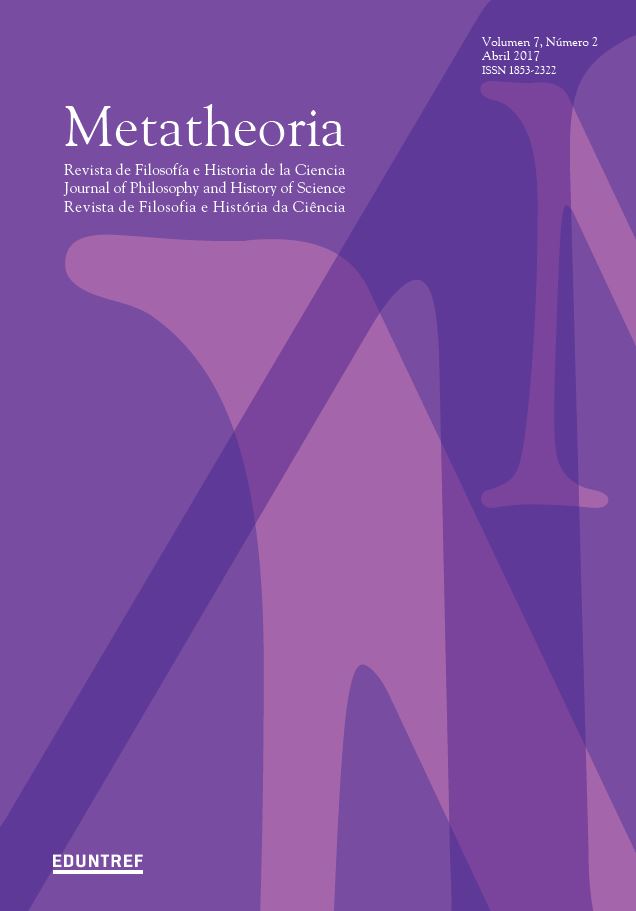The Concept of Existence in Mathematics
DOI:
https://doi.org/10.48160/18532330me7.149Keywords:
mathematical existence, mathematical discovery, mathematical inventionAbstract
We assert that, from a pragmatic point of view, mathematicians treat mathematical objects as if they were real. If a theory is consistent, theorems are discovered (sometimes with analyses not necessarily different from those applied in sciences) and proofs are invented; modern technology cannot exist without accepting the law of excluded middle; a constructive proof may provide new ideas or methods but, from a mathematical point of view, a non-constructive proof is as sound as a constructive one. Accordingly, no mathematician, pure or applied, gets by without the axiom of choice; on the other hand, although different theorems and objects may appear depending on the acceptance or not of the continuum hypothesis, no important theorem applicable to the real world exists – at least until now – which depends on accepting or not this hypothesis. Mathematical objects built by applied mathematicians are often as useful as physical objects, even those objects created via computer-assisted or probabilistic methods.
References
Borcherds, R.E. (2002), “What is the Monster?”, Notices of the American Mathematical Society49(9):1076-1077.
Bunge, M. (1985), Treatise on Basic Philosophy, Vol. 7: Epistemology and Methodology III: Philosophy of Science and Technology Part I, Dordrecht: Reidel.
Bunge, M. (1997), “Moderate Mathematical Fictionism”, inAgazzi, E. andG. Darvas(eds.), Philosophy of Mathematics Today, Dordrecht: Kluwer, pp. 51-71.
Cantor, G.(1895), “Beiträge zur Begründung der transfiniten Mengenlehre I”, Mathematische Annalen46(4):481-512. English translation: “Contributionsto the Founding of the Theory of Transfinite Numbers Article I (1895)”, in Cantor, G.(1915),Contributions to the Founding of the Theory of Transfinite Numbers, New York:Dover, pp. 85-136.
Chorin, A.J. (1976), “Random Choice Solution of Hyperbolic Systems”, Journal of Computational Physics22(4):517-523.
Du Sautoy, M. (2011), “Exploring the Mathematical Library of Babel”, inPolkinhorne, J.(ed.), Meaning in Mathematics, Oxford: Oxford University Press, pp. 17-25.
Feigenbaum, M.J. (1979), “The Universal Metric Properties of Nonlinear Transformations”, Journal ofStatisticalPhysics21(6):669-706.
Fermi, E., Pasta, J. and S. Ulam (1955), Studies of Nonlinear Problems, Los AlamosDocument LA-1940, Los Alamos: Los Alamos Scientific Laboratory.
Glimm, J. (1965), “Solutions in the Large for Nonlinear Hyperbolic Systems of Equations”, Communications on Pure and Applied Mathematics18(4):697-715.
Gowers, T. (2011), “Is Mathematics Discovered or Invented?”, inPolkinhorne, J. (ed.), Meaning in Mathematics, Oxford: Oxford University Press, pp. 3-12.
Landford III, O.E. (1982), “A Computer-assisted Proof of the Feigenbaum Conjectures”, Bulletin of the American Mathematical Society 6(3):427-434.
Lax, P.D. and R.D. Richtmyer (1956), “Survey of the Stability of Linear Finite Difference Equations”, Communications on Pure and Applied Mathematics9(2): 267-293.
Maheara, R. (1984), “The Jordan Curve Theorem via the Brower Fixed Point Theorem”, American Mathematical Monthly91(10): 641-643.
Shannon, C. (1940), A Symbolic Analysis of Relay and Switching Circuits, M.S. Dissertation, Cambridge, MA: Massachusetts Institute of Technology.
Zabusky, N.J. and M.D. Kruskal
(1965), “Interactions of Solitons in a Collisionless Plasma and the Recurrence of Initial States”, Physical Review Letters15 (6):240-243.
Downloads
Published
How to Cite
Issue
Section
License
Copyright (c) 2017 Metatheoria – Journal of Philosophy and History of ScienceThe documents published here are governed by the licensing criteria
Creative Commons Argentina.Atribución - No Comercial - Sin Obra Derivada 2.5 https://creativecommons.org/licenses/by-nc-nd/2.5/ar/





